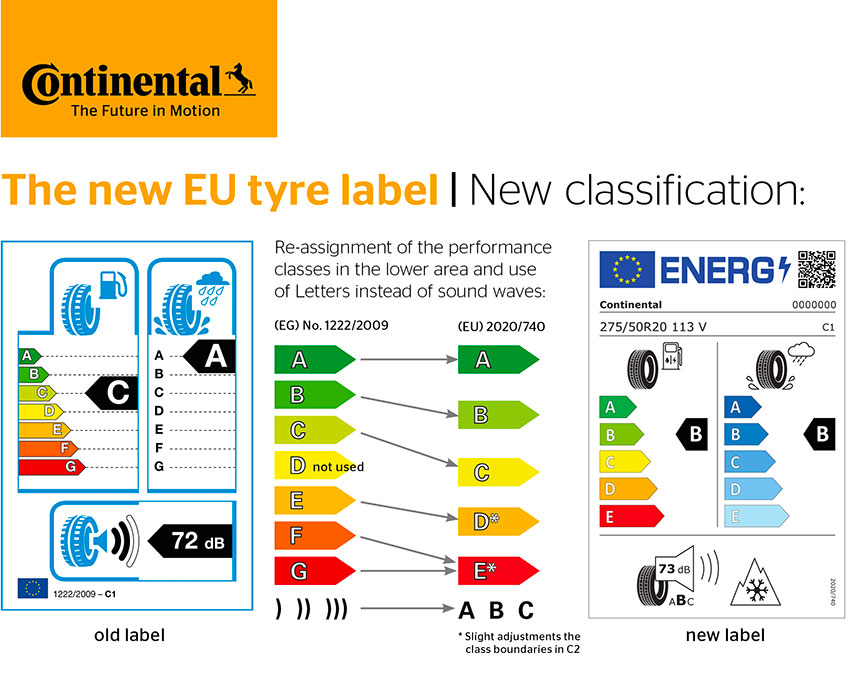Energy labels are a piece of information that consumers can use to purchase the right
tyres for their vehicle. They inform the buyer about the performance of the tyres in terms of
rolling resistance, external rolling noise and braking on wet roads. The labels are then used to classify the level of
performance, but also to encourage manufacturers to design more efficient, safer and
quieter models.
Tyre performance classification
In order to categorise tyres and their performance, there are 3 energy labels:
- The energy efficiency class ranges from A to G (from most efficient to least efficient), it allows the user to
determine the rolling resistance of the tyre and therefore its energy requirements. The less resistance a tyre has to rolling and
the less energy is required to move the vehicle, thus saving money.
- The wet grip class, which also ranges from A to G, determines the braking distance in
wet conditions
- The noise class of the external bearing from A to B determines the noise level
outside the vehicle, from highest to lowest. Tyres with a noise level of class C are no longer
currently authorized.

What does the law say about the energy label?
The obligation to offer car and van tyres with labels on the European market
is laid out in Regulation (EC) No 1222/2009. It will be reviewed and replaced by
Regulation (EU) 2020/740 from 1 May 2021, in view of the new requirements coming into force. These will concern
trucks and buses as well.
This regulation provides that, in addition to the standard label, a symbol informing individuals about the tyre's grip in
extreme snow and ice conditions can be placed on the tyres. Thus, the labelling options
increase to 4. Tyres suitable for extreme snow conditions display the alpine symbol (snowflake on
background of three-peak mountain), while Nordic winter tyres display the mountain symbol with ice.
In addition, the new energy symbols also make it clearer that fuel efficiency applies to both
internal combustion vehicles as well as electric vehicles. The noise performance class shall always be indicated on the
lower part, with the noise level in decibels.
The new regulation also stipulates a ban on tyres whose rolling resistance and
wet wet are of classes F and G, reducing the scale of values to 5 classes (A to E instead of A to G).
Finally, the performance of tyres displaying the 5 parameters will be evaluated by
standardised tests and national authorities may carry out their own checks. It will even be possible
to obtain additional information from the European Commission's database using a
QR code.
It should be noted that Regulation (EC) No 661/2009 on the general safety of motor vehicles sets out the
minimum efficiency requirements for the ecodesign of tyres.
Correspondence between the old and new generation of energy labels :




